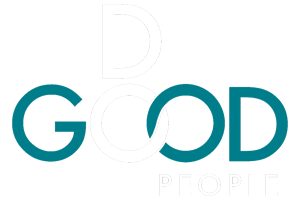Bridging the gap between corporate sustainability goals and employee actions ensures that sustainability becomes an integral part of the organizational culture, empowering everyone to contribute to a shared vision for a better future.
Table of Contents

Corporate sustainability goals often represent ambitious visions, however, a significant disconnect frequently arises between such high-level objectives and the daily actions of employees who are tasked with bringing them to life.
This misalignment can hinder the impact of even the most well-intentioned initiatives, as employees may lack the tools, or even the motivation to translate corporate goals into tangible outcomes.
Aligning corporate sustainability goals and employee actions is essential not only to unlock meaningful progress, but to ensure that every individual within the company plays a vital role in driving sustainability forward.
Empower employees to contribute to the ESG strategy
The need to align sustainability goals with employee actions
For corporate sustainability initiatives to succeed, they must move beyond good-minded declarations and permeate the day-to-day actions of employees. Without this alignment, even the most ambitious goals risk becoming symbolic rather than actually impactful.
Employees play a pivotal role in operationalizing sustainability strategies, which makes their active engagement and understanding in ESG matters essential for achieving meaningful progress.
One key reason alignment is critical is that it transforms sustainability from just an abstract concept into a tangible and shared responsibility. In this regard, employees need to understand how their actions contribute to broader goals in order to become active participants in driving change.

Misalignment can create confusion, reduce morale, and even breed cynicism about the company’s commitment to sustainability, but fostering alignment allows companies to unlock many benefits. For example, engaged employees are more likely to feel pride in their workplace and contribute innovative ideas to sustainability efforts.
Ultimately, bridging the gap between corporate sustainability goals and employee actions is not just a practical necessity but a strategic advantage. It ensures that sustainability becomes an integral part of the organizational culture, empowering everyone to contribute to a shared vision for a better future.
How can companies bridge the gap?
Now that we understand how crucial it is to align corporate sustainability goals with employee actions, we can begin to uncover the necessary strategies that help engage, educate, and empower the workforce.
By addressing the root causes of misalignment, companies can create a culture where sustainability becomes a shared responsibility.
Clear communication and strong storytelling
A lack of clarity is one of the main reasons employees struggle to connect their actions with corporate goals. Leaders need to communicate sustainability objectives in simple and relatable terms make regular updates and develop internal campaigns that help reinforce the importance of these goals.
In this regard, storytelling is a very powerful tool, for example, sharing real-life examples of successful sustainability initiatives can inspire employees and make the goals feel achievable.
From sustainability awareness to employees' active engagement
Engage employees in the goal-setting process
Employees are more likely to engage with sustainability efforts if they feel a sense of ownership. Involving them in the goal-setting process and seeking their input through surveys or workshops, for example, is key to making them feel a sense of purpose and responsibility.
Creating sustainability committees or appointing employee ambassadors can help embed these goals into the workplace culture. This involvement not only builds enthusiasm but also surfaces practical ideas from those closest to the operational challenges.
Linking actions to impact
Employees are far more likely to feel motivated when they see how their efforts contribute to broader corporate goals that actually have an impact on society, the environment or the company’s own success.
In this sense, it is essential to use data and metrics to show the impact of individual and collective actions. For instance, a dashboard that tracks energy savings or waste reduction can foster a sense of achievement. Celebrating milestones and sharing success stories also reinforces the value of employee contributions.
Turning ambition into action
Bridging the gap between corporate sustainability goals and employee actions is critical for meaningful progress. While ambitious goals set the vision, real change happens when employees are engaged, informed, and empowered to act.
Clear communication, employee involvement, and practical integration into daily workflows are key strategies to align efforts. By linking individual actions to measurable impact and fostering a culture of shared responsibility, companies can transform sustainability from an ideal into an actual outcome.
Aligning goals with actions ensures not only the success of sustainability initiatives but also a more engaged and purpose-driven workforce.







